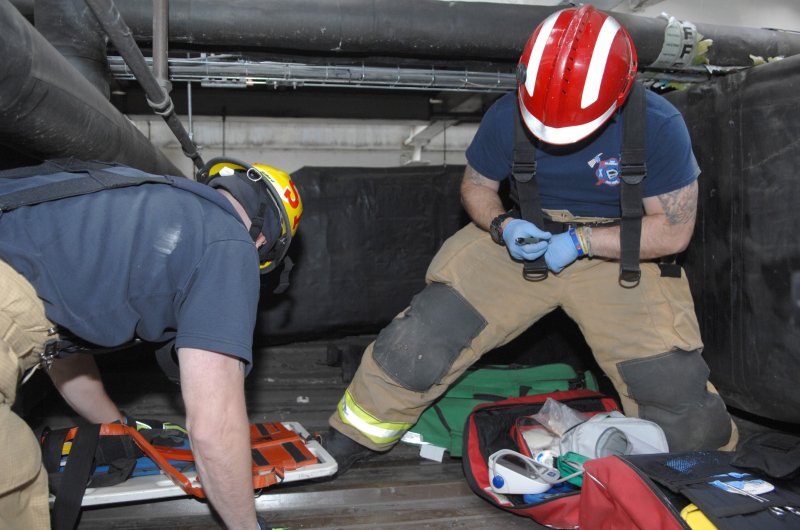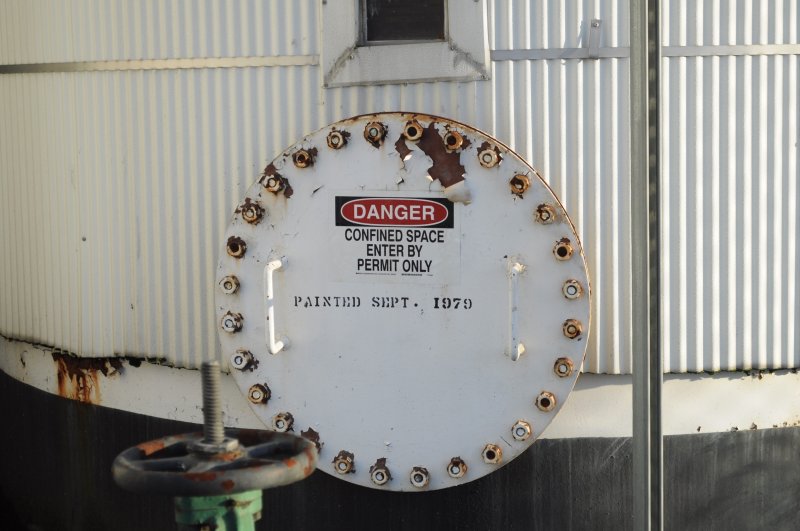Home > Blog > Business and Law
Working in a Confined Space
There’s 100s of different working environments, some tougher than others. Here’s all you need to know about working in a confined space.

This article isn’t one for the claustrophobic amongst you… Whilst there’s 100s of different working environments, none quite makes our hands sweat more than imagining working in a confined space. But, many men and women all work in these spaces on a daily basis. Whether it be electricians or fire fighters, they crawl and clamber into these not always tiny spaces to do the necessary work for their job. Confined spaces can be defined not only as small spaces, but work environments that are partially, largely or fully enclosed. If we haven’t scared you off as of yet, and you’re looking to learn more about working in a confined space, this is the only article you need to read!
We’ll be going through everything you need to know, from confined space training to what roles involve working in confined areas and more! If your interest is piqued, and you want to read more, keep scrolling through! We’ve got you covered…
Confined Working
Yes, working in a confined space is not for the faint hearted (or those with a fear of confined spaces). It’s tough work, and involves working in areas like pits, trenches, sewers, drains, vats, silos, tanks, chambers and ducting as well as any smaller area which is unventilated or with limited ventilation. This can involve workers such as electricians, fire fighters, sewage workers, gas engineers and even ship maintenance workers too! Anything that involves a potential threat of safety in these confined areas, requires confined space training (but we’ll get into that).
The Risks
Now we have to get to the serious bit. Unfortunately, the mortality rate can be very high in professions inside a confined space, and there are numerous accidents and incidents that have occurred. The fact is, that working in confined spaces is a risk. Some of the examples of incidents that have occurred can be seen below.
- Oxygen Levels
A lack of oxygen in confined spaces can lead to asphyxiation for individuals working within this environment – this is one of the most common causes of death.
- Temperature
Sudden increases or decreases in temperature in these areas can lead to the deaths of workers in confined spaces.
- Introduction of Liquids or Solids
Flooding chambers or cave ins (and more) in confined spaces are more examples of hazards and potential risks when working in these spaces.

Other hazards such as high concentrations of dust and no natural light are potential safety risks to confined space workers. The correct training for confined space workers and employers too is essential, to make sure these hazards and risks are fully understood by all involved in this work.
Preventative Measures
As well as making sure all staff are fully competent and trained to standards of confined space training. There are so many courses all across the UK that make sure confined space workers are properly trained, understand the risks and know what to do in the event of an incident. For those managing the areas? Proper training and effective maintenance, monitoring confined space areas to ensure that they are safe for staff to work in. Here are but a few examples of what can be done to prevent incidents happening in confined spaces.
- Testing the Air
One massive risk and hazard is the quality of air available in these confined spaces. Lack of oxygen or harmful gasses are the cause of death by asphyxiation in these confined areas. Ensuring that the air is tested frequently and made sure it is safe for work is key to prevent incidents in confined spaces.
- Proper Training in working, safety and rescue
Like we’ve said, training should be up to high and qualified standards, for workers. Not only training in working and knowledge of hazards, but knowing proper safety procedures and, in the event of an emergency, proper rescue procedures too.
- Implementing proper ventilation
Circulating air, making sure that there will not be a lack of oxygen is vital for those working in a confined space. Be it mechanical or natural ventilation, each confined space needs adequate ventilation to make sure air is circulated and safe.
- Equipment Maintenance
Respiratory equipment and all other safety gear must be properly maintained. It’s to make sure that workers kit won’t fail them whilst working in these confined spaces. Prevention is key, so making sure equipment is up to scratch can save lives.
Final Thoughts
Working in a confined space can be risky, but with proper training and procedures in place, the number of incidents in the work place can be reduced significantly – because prevention is key. With safety measures in place, mortality rates shouldn’t rise for confined space workers. There have been some horrific incidents which could have been prevented with proper testing, training and procedures. All those considering working in confined spaces must undergo the proper training.
Previous Posts: